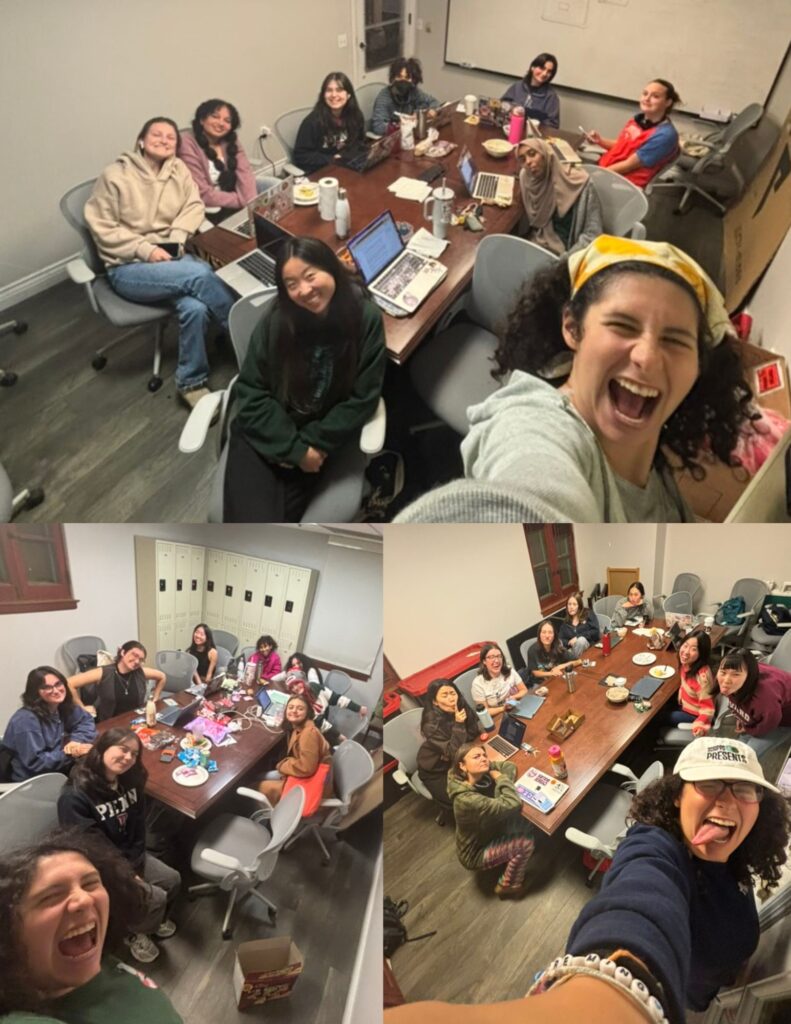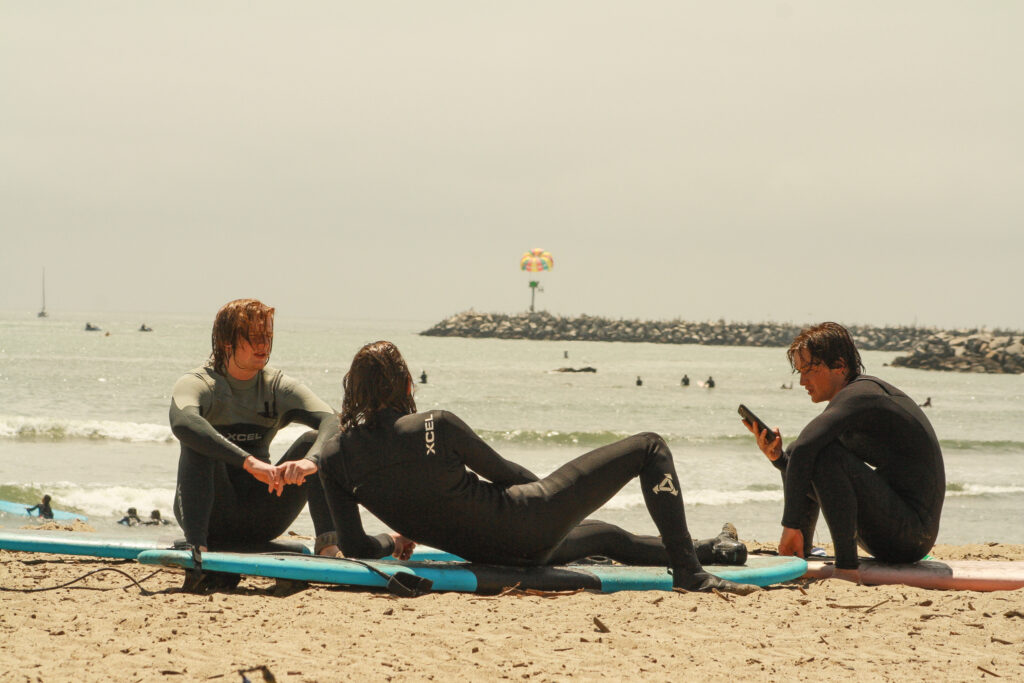TSV Copy Editors
Within the last year, there has been an increase in violent tactics employed by Campus Safety, including racial profiling and assisting with the detainment and arrest of a Chicanx Latinx studies professor, helping facilitate the arrest of 19 5C students, and physically assaulting a student press representative. These acts of repression have been in the context of student protesters fighting for 5C divestment from Israel.
This increase in militarization correlates to the ongoing genocide in Palestine and Lebanon since Oct. 7 of last year. Around 186,000 Palestinians have been martyred due to the ongoing genocide, according to an estimate by the Lancet medical journal.
In the wake of this violence both at home and abroad, The Scripps Voice sat down with three 5C Prison Abolition Collective steering members to discuss Campus Safety’s role at the 5Cs. They addressed the history of campus security at universities, Campus Safety’s ties to the larger prison industrial complex, and how the fight for prison abolition ties into the Palestinian liberation movement.
A member of PrisAb steering said students are often confounded by Campus Safety’s role at the 5Cs due to the contradiction between their advertisement and their subsequent actions towards students.
“One thing that’s really annoying about campus security, as an organization, is that the types of officers and the types of roles that people play in the office are absolutely not clear,” they said. “I think a lot of people do not really understand when they’re interacting with a member of campus security [or] whether or not they’re a trained sworn officer or if they’re someone who was just hired off the reserves for event staff.”
Campus Safety’s mission statement states they are “[committed to] protecting individuals and property to the best of [their] ability while striving for excellence in all [their] endeavors.” Campus Safety’s website also describes their working relationship with the Claremont Police Department: “Campus Safety also takes reports of crimes and incidents for Claremont Police Department investigation and assists law enforcement and other emergency service providers.”
A member of PrisAb steering said the relationship between Campus Safety and Claremont Police Department (CPD) has become much clearer in the aftermath of the arrest of student protesters.
“Ideologically, for a really long time people have given campus safety a lot of grace and criticized students for affiliating them with the police in their mind,” they said. “But I think a lot of that has changed after the arrest [of 19 students] that happened last year. I feel that made [it] abundantly clear that there is a working relationship between the two organizations and also that campus security sees themselves as a policing force who’s not here to keep students safe.”
One member of the PrisAb steering committee said that students have a common misconception when thinking about the dynamic between the two entities. “I think what a lot of people miss out on is thinking that because they [Campus Safety] are not the Claremont Colleges PD, that they do not have an active working relationship with [the] LAPD with the Claremont PD. They have what’s called a memorandum of understanding, which is like a legal document which lays out what is and is not the jurisdiction of Claremont PD versus campus security.”
A document like this facilitates the jurisdiction and communication between Campus Safety and CPD. In line with this cooperation, a meeting between the Director of Campus Safety Mike Hallinan, Pomona Dean of Students Avis Hinkson, Pomona Vice President and Treasurer of Pomona College Jeff Roth, and Chief of Claremont PD Aaron Fate took place on April 2; three days before the arrest of 19 student protesters last semester.
“They’re here to police picket lines,” a PrisAb member said. “They’re here to remove students from buildings. They’re here to take photos of students’ faces [of] people trying to cover up so that [protesters] could be prosecuted within the university for crossing that ideological line [of liberal discourse to] being pro-Palestine or being pro-worker.”
This conflation between Campus Safety and the police has become further evident this semester, following the increased working relationship between the two organizations and Campus Safety’s police-style strategies to surveil, repress, and punish student protesters.
Over the summer, Pomona College employed five additional Campus Safety officers. Earlier this semester, Campus Safety deployed an LRAD (long-range acoustic device) at a Mudders Against Murder action at a Harvey Mudd career fair. LRADs are specialized loudspeakers used by police for crowd control at protests and can be loud enough to cause permanent hearing damage. Most recently, there was an apparent increase in Campus Safety before and during the Oct. 7 walkout and sit-in at Carnegie Hall.
This repression and aggression toward student protesters at the 5Cs have brought to light campus security’s deep-rooted history as policers of student activism across college campuses. The PrisAb steering member highlighted how campus security began “as night watchman and then shifted specifically at Columbia University during the protests against the Vietnam War.”
“There were student movements that were happening on campuses and that was becoming a problem,” the same PrisAb member said. “Student bodies were becoming increasingly diverse. It wasn’t just rich white guys who were going to university. What universities realized was that it was inefficient to rely on outside police departments to control their student body. So that’s when campus security becomes a professionalized bureau within the university.”
The steering member said this was the “turning point in history when campuses started to police their own students as opposed to having campus security to keep poor people off of their campuses while they were encroaching and gentrifying surrounding areas.”
Throughout Campus Safety’s history at the 5Cs, they have attempted to reframe their image from “night watchmen/security guards” to “professional purveyors of services both service and law enforcement related,” according to a 1999 email announcing the immediate name change from Campus Security to Campus Safety. It states, “Campus Safety more accurately reflects the inherent combination of services but also to increase the level and quality of services given to the community.”
In the past two years, Campus Safety has changed their blue uniforms, which resemble that of police, to a gray polo and khakis.
Students are unconvinced by these superficial changes, a steering member explained. “[They] just blur the lines,” they said. “It’s like ‘we’re police because we carry pepper spray but we’re not police because I’m wearing a gray shirt and not a blue shirt.’ It makes it so nobody knows what their jurisdiction is and so nobody knows what their rights are.”
The most notable contradiction to Campus Safety’s attempted shift in image is the hiring of Hallinan, a former Los Angeles County Sheriff and graduate of the FBI National Academy.
A member of the steering committee noted that Hallinan’s presence on campus has abated students’ trust in Campus Safety. “He clearly has a vision as to how the Claremont Campus Safety office should operate and we’re feeling it. He’s bringing his prior experiences to campus. The relationship between students and Campus Safety has only gotten worse, it has only become more agitated because they’ve become a militaristic policing operation.”
The PrisAb member added, “It’s another indication of the colleges putting their money where their values are, which is about like policing their students and like giving campus security a brand new building, brand new cars, brand new uniforms, and changing the name from campus security to campus safety instead of actually reacting to the structural problems.”
A steering member added that Campus Safety’s continued adherence to The Clery Act, a law that requires Campus Security to inform their community of crime statistics and potential threats and dangers, contributes to the criminalization of unhoused people and student protesters.
They mentioned a Sept. 10, 2023 Campus Safety message, which described a subject “prowling through windows at Pitzer College,” as an example of how Campus Safety utilizes “crazy racialized language.”
The steering member cited the Oct. 7 Campus Safety message regarding the “taking over [of] Carnegie Hall” as one such incident. “The [student protesters] said everybody had a right to come and go as they pleased and we will be done at 4:00 p.m. Is that what you see reflected in that text blast? Absolutely not,” they said. “It’s crazy the way in which they are able to criminalize student activism, peaceful student activism by using that system […] That’s when the real crackdown and intimidation occurs because of this conflation of anti-Zionism with antisemitism and because of people being racist towards black and brown people.”
PrisAb members shed light on how Campus Safety’s response to student protests for Palestine is an example of the larger ways the prison industrial complex upholds colonization. “The prison industrial complex is a set of interests that are the [same] state set of interests [used] to control people of color, poor people, and queer people. One could argue that Israel as a Zionist imperialist state has a similar set of interests [and] is also backed by the US and the US military.”
They also highlighted how the police are trained alongside the IOF (Israeli Occupation Forces), which establishes a larger connection between the United States prison industrial complex and the ongoing genocide and occupation of Palestine, specifically referring to Gaza as the “biggest open-air prison in the world.”
Although Campus Safety’s ongoing actions against the work and voices of student activists may be despairing, a member of PrisAb imagined long-term abolition as a creative and continuous endeavor.
“It’s about accepting that maybe we don’t have a complete vision for the future, but that we know what’s happening right now doesn’t work.”


